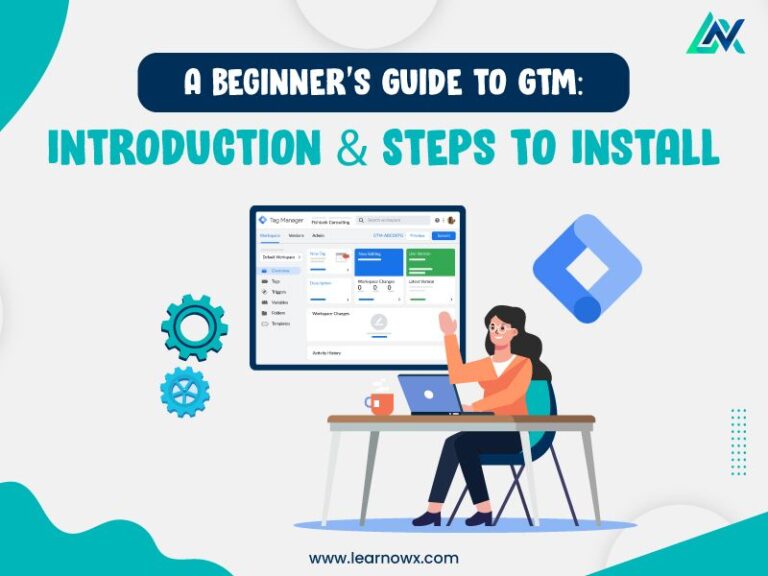Sharing is caring!
Today, front-end developers are constantly looking for ways to upgrade their skills to create visually appealing and user-friendly interfaces. As minimalist designs become increasingly popular in the design era, unstyled UI components have also been in demand recently.
As per the statistics, more than 70% of users prefer simplicity and ease of use in website design. This has led to a growing demand for the expertise of powerful tools in developers’ arsenal to craft sleek and customizable user interfaces. This is where the LearNowX front-end developer course is your one-stop-shop for all your skill development needs, helping tech enthusiasts gain the skills & confidence to succeed in the IT industry.
Whether you’re a tech enthusiast looking to build a career in this field or advance your career, LearNowX can provide you with the tools and resources you need to thrive in this tech era.
In this blog, we’ll be discussing the fundamentals of unstyled UI components, including their benefits and syntax for installation to help front-end developers master the art of using unstyled UI components effectively.
Unstyled UI Components Overview
Ref: Headless UI library website
Unstyled UI components are fundamental user interface (UI) building blocks without pre-set styles. They provide the basic structure and functionality, allowing developers to customize them according to specific design needs. By using unstyled components, developers can save time and effort by avoiding the limitations of traditional UI elements.
These components typically include buttons, inputs, and cards, devoid of aesthetic details such as colors, fonts, or borders.
With the use of un-styled components, developers can unleash their creative & branding prowers, & apply their own CSS styles to tailor the appearance to match the overall design scheme of their application or website. Using unstyled components also ensures consistent design language across different projects, which helps to maintain a cohesive and professional look and feel.
Benefits Of Using Unstyled UI Components
Unstyled UI components offer a broad spectrum of benefits for front-end developers, such as:
1. Flexibility: Unlike pre-existing styles, unstyled UI components offer developers complete control to design and style them from scratch, allowing for creating unique designs that fit any project’s unique style and branding requirements.
2. Performance: Unstyled components contribute to faster load times and a better overall user experience by eliminating unnecessary CSS overhead.
3. Customization: With unstyled components, designers have complete control over every aspect of the visual presentation, including colors, fonts, sizes, and layouts, resulting in highly personalized and tailored user experiences.
4. Consistency: Using unstyled components at the beginning of a project helps developers ensure a consistent design language throughout their application. This consistency made navigation and access to the app features across screens and interactions easy and effective.
5. Scalability: Unstyled UI components also facilitate modular design practices to quickly scale & maintain large applications by reusing and extending components across various interface parts. This scalability is especially useful for projects that require frequent updates and modifications.
6. Adaptability: Unstyled components keep UI designs adaptable and modern over time. As design trends and user preferences change, unstyled components allow easy updates and modifications to keep the interface relevant.
Types Of Un-styled UI Components
1. Radix UI Dialog Component:
Radix UI’s Dialog component is a versatile tool for building popup windows in React applications. It includes modal and non-modal popup windows, so you can interact with the popup without leaving the current screen. Radix UI provides essential building blocks such as Trigger, Portal, Overlay, Content, Title, Description, and Close for comprehensive dialog design.
Here is the syntax to install the Radix UI Dialog Component Package Using npm:
npm install @radix-ui/react-dialog@latest -E
2. Shadcn UI Component:
Shadcn UI components, built on Radix UI and Tailwind CSS, offer a seamless user experience with lightweight and efficient design. Shadcn supports two types of popup windows: Alert Dialogs and message displays. It provides easy integration with other components like Context Menus and Dropdown Menus, enhancing functionality. With Shadcn, you can apply visual effects like fading, sliding, or zooming to make your popups more visually appealing.
To install the Shadcn dialog component, use this syntax
npx shadcn-ui@latest add dialog
3. Headless UI Library:
Headless UI Library offers a flexible approach to building modal windows in React and Vue applications. It provides fully managed components with customizable styles and built-in accessibility features. The Dialog and Dialog.Panel components allow seamless transitions and can be styled using className or style props. Headless UI enables you to create scrollable dialogs and animated overlays for attention-grabbing effects.
To start using Headless UI, install the library via npm:
npm install @headlessui/react
4. PrimeReact UI Dialog Component:
PrimeReact UI’s Dialog component offers flexibility and functionality for displaying content in overlay windows. It supports features like resizing, drag-and-drop, and customizable appearance. The dialog automatically adjusts its width based on screen width and includes a scrollbar for easy navigation through lengthy content. PrimeReact UI ensures compatibility with screen readers and keyboard navigation, making it accessible to all users.
Run this command to integrate PrimeReact UI into your project:
npm install primereact
5. Reach UI Dialog Component:
Reach UI Dialog component provides accurate control and accessibility features for designing user-friendly popup windows. It offers seamless functionality across various devices, including iPads and iPhones. Reach UI supports pinch zooming and simplifies the creation of alert popups.
To start using Reach UI, install the components using npm:
npm install @reach/dialog
Conclusion
In conclusion, these five UI component libraries—Radix UI, Shadcn, Headless UI, PrimeReact, and Reach UI—offer powerful tools and features for creating visually stunning user interfaces and captivating dialogs in your web applications. You can craft beautiful and WOW designs tailored to your specific needs and branding guidelines using a blank canvas and adding your styles. Whatever your priority is, there’s a library at your disposal to fulfill your design and creativity needs. With Unstyled components in front-end development, don’t settle for off-the-shelf designs when you have the power to harness the full potential of your ideas and innovation to build something that stands out.
Don’t keep the knowledge to yourself; try unstyled UI components in your next project and see the difference they can make. Want to become a skilled front-end developer with rich expertise across various tools & technologies? Enroll in the LearNowX front-end developer course and take the first step toward a rewarding tech career in web development.








